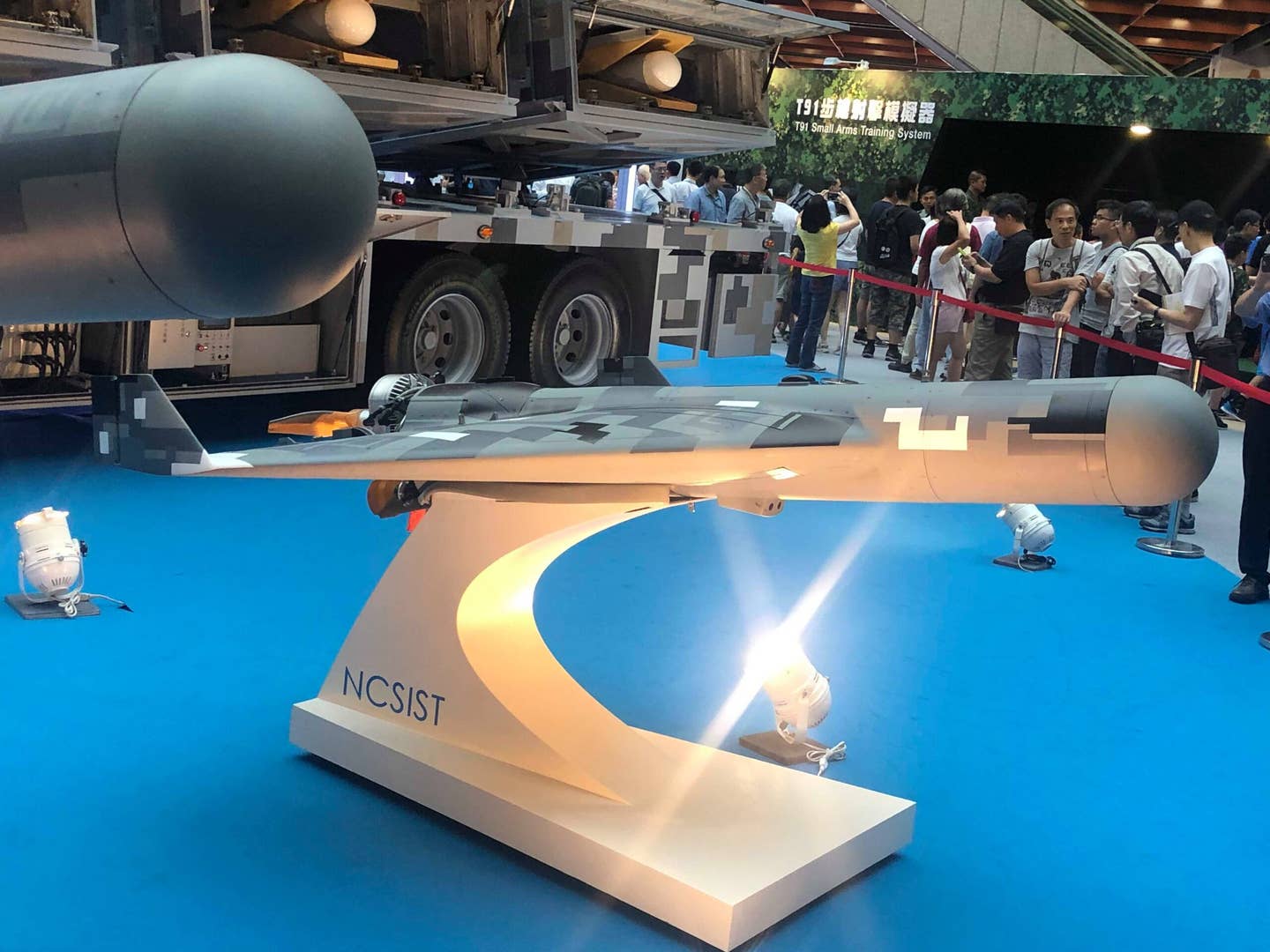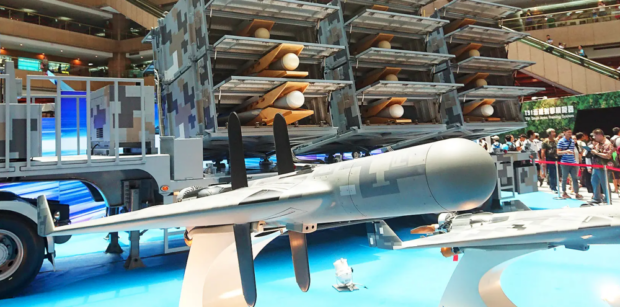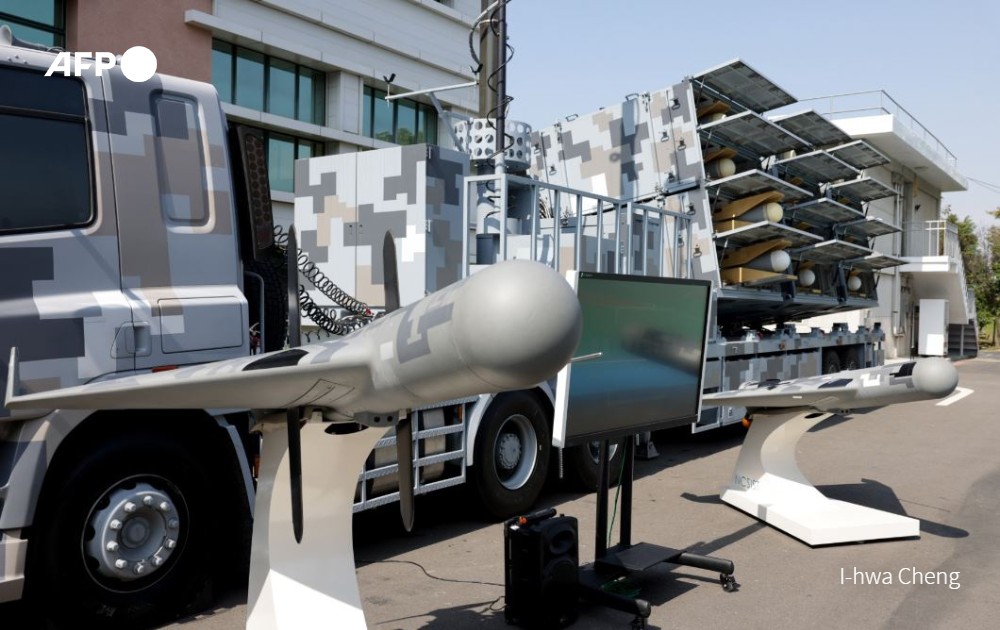The Taiwan drone exhibition event this week was hosted by the National Chung-Shan Institute of Science and Technology (NCSIST), a Taiwanese government-owned military technology manufacturer that develops a wealth of the Republic of China Armed Forces’ weapons.
NCSIST provided an especially rare look at one weapon in particular: the truck-launched Chien Hsiang. These indigenous anti-radiation loitering munitions are designed to take out enemy radars positioned at sea, on the coast, or inland, according to NCSIST. The company also claimed that Chien Hsiang can strike other unmanned aerial vehicles (UAVs), but it wasn’t made clear exactly how this is achieved. It’s possible it could home in on the emissions of slower-moving drones and attack them, but that would be a relatively limited and questionable use case.
The Taiwan government-owned news outlet Focus Taiwan covered a press briefing held at the event during which Chi Li-ping, head of the NCSIST’s Aeronautical Systems Research Division, revealed that Chien Hsiang has a maximum flight time of five hours and can strike targets approximately 621 miles away (1,000 km).

The Chien Hsiang loitering munition on display at the 2019 Taipei Aerospace & Defense Technology Exhibition. Credit: Kenchen945/Wikimedia Commons
The exact control architecture for Chien Hsiang isn’t clear, but Focus Taiwan did quote Chi as insisting that if the drone were to lose its signal while en route to a target that it could instead loiter in the area for an undisclosed amount of time while waiting for the target to radiate again before locking on to the emitter and completing the strike. This is generally how these types of loitering munitions work — they fly on autopilot to a threat area and wait to detect a preprogrammed electronic ‘fingerprint’ of a radiating threat system and then attack it autonomously. Having a man-in-the-loop is not necessary.
Attacks are then carried out by Chien Hsiang executing a downward swooping motion before crashing into the target at 372 mph (600 kmh), according to Chi. Chien Hsiang can also work as a decoy and can potentially be equipped with an electronic warfare package for stand-in jamming of enemy emitters. And, of course, there is no reason why these drones could not be used to strike non-emitting static targets.
Chien Hsiang was first seen at the 2017 Taipei Aerospace & Defense Technology Exhibition without its official designation, and its vehicle-based launcher configuration was then unveiled at the same event in 2019 where it could be seen with 12 canisters each loaded with one of the loitering munitions. Chi claimed that all 12 Chien Hsiang drones can be launched at once in a ‘cluster’ without the need for a runway thanks to its mobile launcher.
This means the system can launch from all over Taiwan’s main island in a ‘shoot-and-scoot’ fashion, but also allows it to be transported to outlying island installations when needed. Fixed ground-based launchers or those carried aboard the Republic of China Navy’s surface combatants can also purportedly deploy the Chien Hsiang drones.
Chi said that the production and delivery of 104 Chien Hsiang munitions are projected to be completed by the 2025 deadline originally set by NCSIST, but they did not go into detail about exactly how many Taiwan has ordered, or plans to, in total. One would imagine the total order could be substantially bigger in the future.


